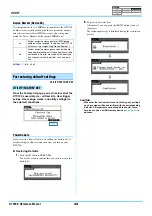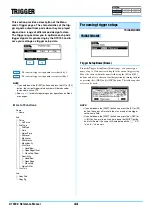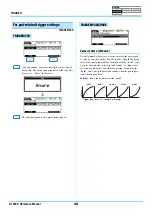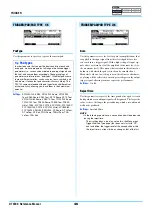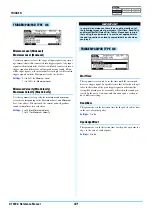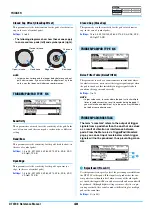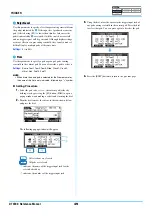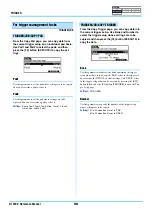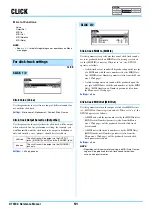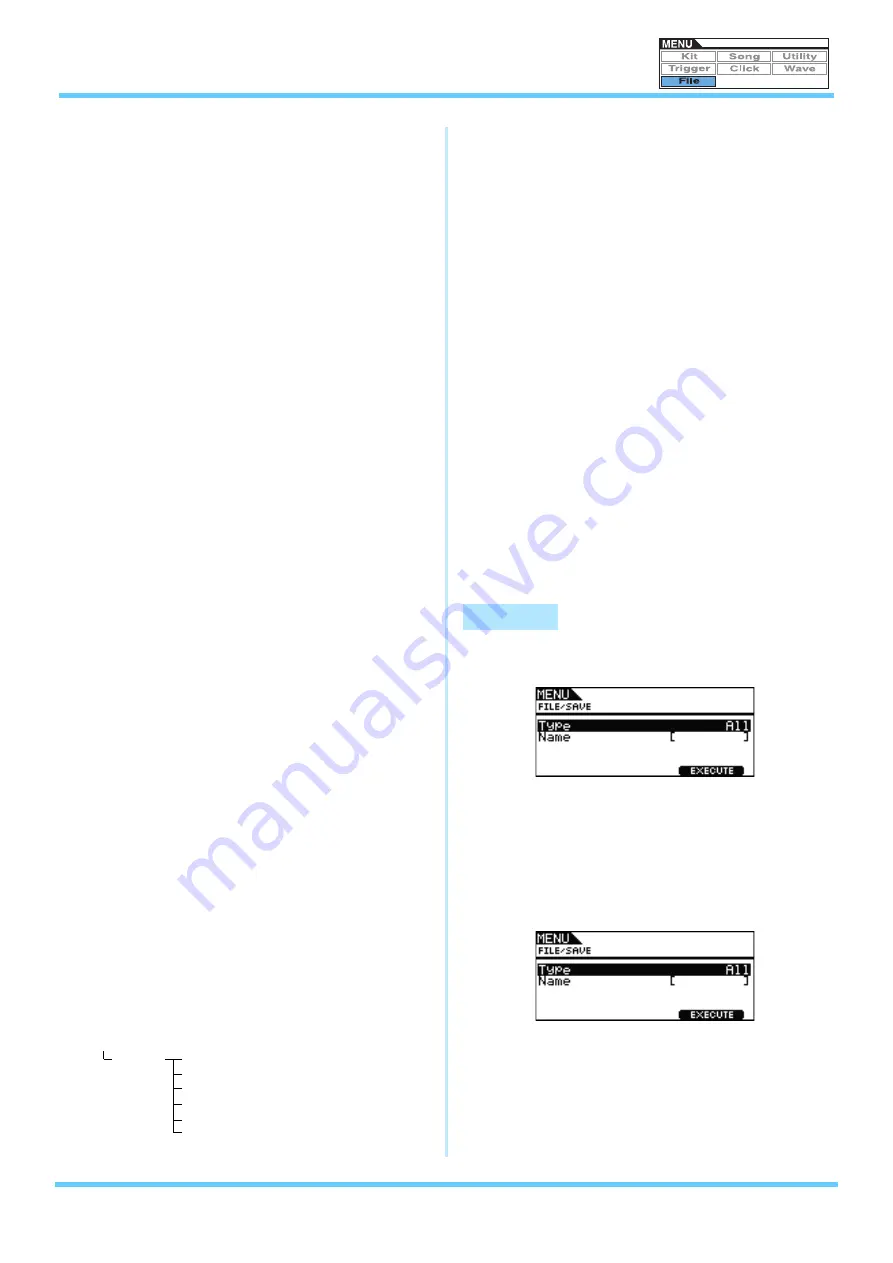
DTX700 Reference Manual
57
FILE
A number of terms will be used in the following
descriptions of file management functions and opera-
tions from the Menu area’s File pages. Please take a
moment to familiarize yourself with their meanings in
order that these functions and operations can be
more easily understood.
File
The term “file” is used to define a collection of data stored on a
USB memory device. The exchange of data between the
DTX700 and USB memory devices is carried out in the form of
files.
File name
As with your computer, the DTX700 can assign names to indi-
vidual files. These names are used to tell files apart, and for this
reason, no two files within a specific directory can share the
same file name. Although computers can handle very long file
names, even including non-English characters, the DTX700
requires that names be limited to alphanumeric characters.
File extension
The three letters following the period at the end of a file name –
such as “.mid” and “.wav” – are referred to as a “file exten-
sion”. The type of data contained within the file is identified by
the file extension. Please note that, although the DTX700
assigns file extensions to file names, they are not displayed on-
screen in order to make more efficient use of space.
File size
The amount of memory needed to store a file is indicated by
the file size. These sizes and also the capacities of memory
devices are presented in standard computer format using B
(bytes), KB (kilobytes), MB (megabytes), and GB (gigabytes).
(1 KB is equivalent to 1,024 bytes, 1 MB is equivalent to 1,024
KB, and 1 GB is equivalent to 1,024 MB.)
USB memory device
The term “USB memory device” is used to refer to flash mem-
ory and other USB memory units used for the storage and
retrieval of files.
Directory
A hierarchical directory system is used on memory devices in
order to group files together according to type or application.
In this regard, a “directory” is equivalent to a folder as used on
a computer. As with files, you can assign names to individual
directories. DTX700 file operations are carried out inside a set
of special directories created within a USB memory device
when it is formatted from the Menu area’s File/Format page.
Please note that the DTX700 does not display this directory
structure on-screen.
Format
The operation of initializing a USB memory device is referred
to as “formatting”. Whenever you format a USB memory
device using the DTX700, any previously created files and
directories (or folders) will be erased and special directories for
file operations will be created.
Save, load
The term “save” refers to the writing of data created on the
DTX700 to a USB memory device for storage, while “load”
refers to the reading of files from the memory device into the
instrument’s internal memory.
List of Functions
NOTE
•
See
for details regarding cursor operations on Menu
area pages.
Carry out the following steps to save a file on a USB
memory device.
Procedure
1.
Plug a USB memory device that has been formatted on the
DTX700
into the [USB TO DEVICE] port
on the side panel.
2.
Navigate to the Menu area’s File/Save page.
The page will appear as follows.
\YAMAHA
DTX700
ALL : All
ALLKIT : All kit
ALLSNG : All song
ALLTRG : All trigger
ALLWAV : All wave
UTL : Utility
FILE/SAVE

